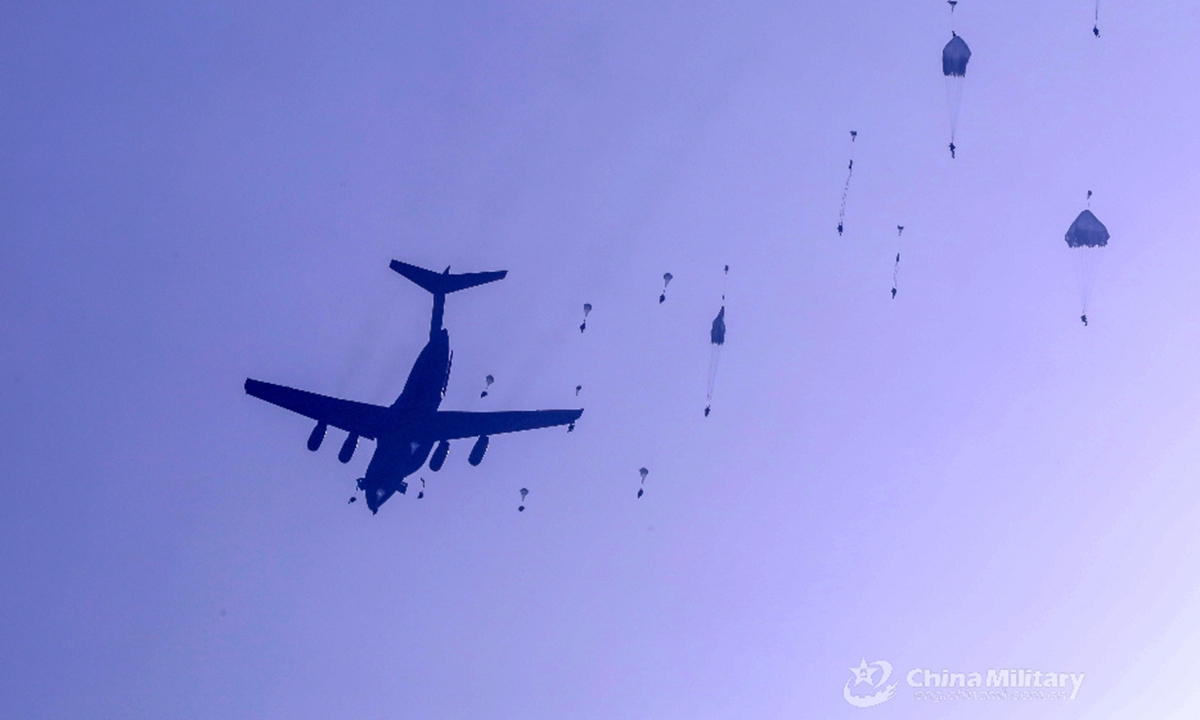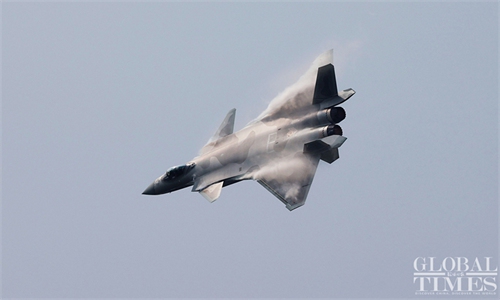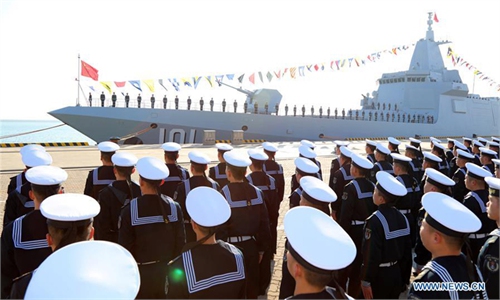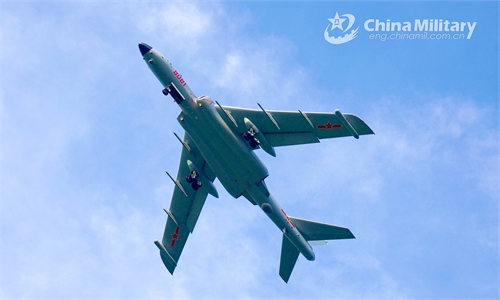Drones assist PLA paratroopers with logistics supply tasks in assault exercise

Paratroopers assigned to a brigade of the airborne troops under the PLA Air Force descend to the drop zone during an air-drop training exercise on January 16, 2021. (eng.chinamil.com.cn/Photo by Liu Bingbing)
The Chinese People's Liberation Army (PLA) Air Force Airborne Corps recently deployed multiple types of drones to assist paratroopers during an assault exercise, with the drones delivering supplies to the airborne troops deep behind the enemy line.
Experts said on Monday that this tactic could greatly increase the sustained combat ability of the paratroopers.
A brigade attached to the PLA Air Force Airborne Corps recently conducted a capture-and-control drill in key locations in the central parts of Southwest China's Yunnan Province, Beijing-based newspaper Science and Technology Daily reported on Friday.
As the paratroopers entered deep into hostile territory and were met with heavy resistance, they requested munitions. Only one minute later, a medium-sized rotary wing drone was loaded with nearly 50 kilograms of munitions and provided the troops with the much needed supplies, helping them to grab the target fire position.
As the battle continued, some troops were wounded, and that was when a type of heavy rotary wing drone took off, avoided anti-aircraft fire by flying at a low altitude, and transferred the wounded back to safe zones for medical treatment.
After the successful final assault on the hostile command center, eight quadcopter drones formed a swarm to send supplies to the frontline, stretching for more than 10 kilometers, as the troops were then required to defend the positions.
Drones are fast, stealthy and precise, and their involvement in the battle shortened the time needed by nearly an hour, and greatly reduced casualties, Li Qilong, a company commander affiliated with the brigade, was quoted by Science and Technology Daily as saying.
Other means of logistics support are often challenging for airborne operations, the report explained. For example, it is difficult to provide supplies via land, airdrops via large transport aircraft are vulnerable to hostile anti-aircraft fire, and precision airdrop systems are also costly.
In airborne combat, paratroopers often fight deep behind enemy lines, and as they penetrate further, the more challenging logistics support becomes, a military expert told the Global Times on Monday, requesting anonymity.
Drones can be a good tactical choice to make up for this shortcoming, the expert said, noting that they could empower the airborne troops to remain in combat for extended periods.
The Airborne Corps brigade will continue to explore new models to integrate drones in combat, according to the Science and Technology Daily report.
In addition to transport, drones can also perform reconnaissance and attack tasks, experts said.




